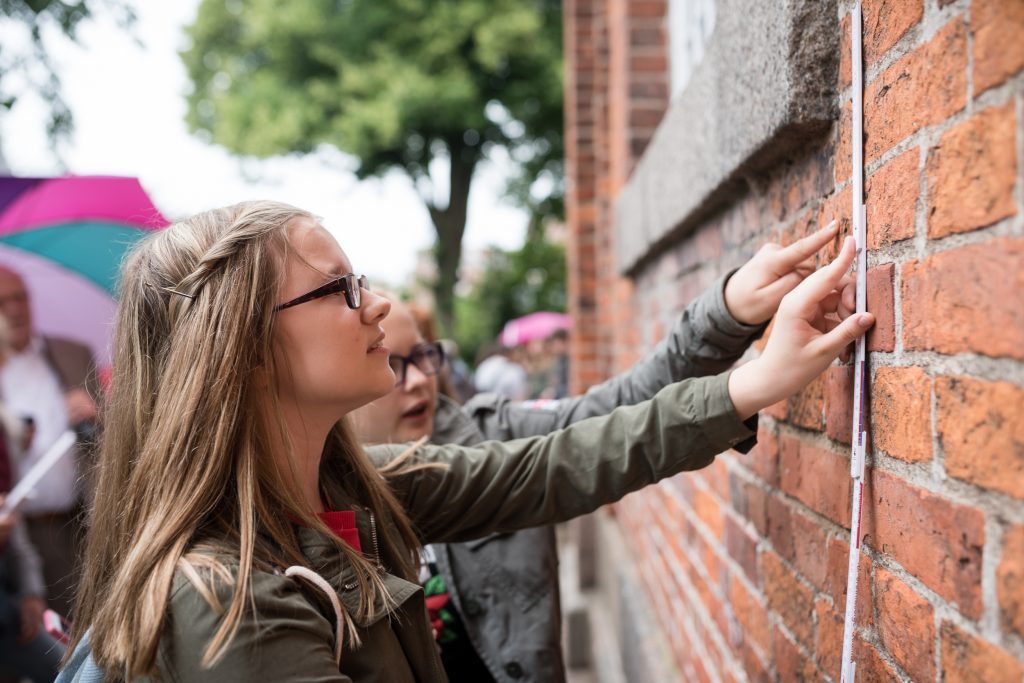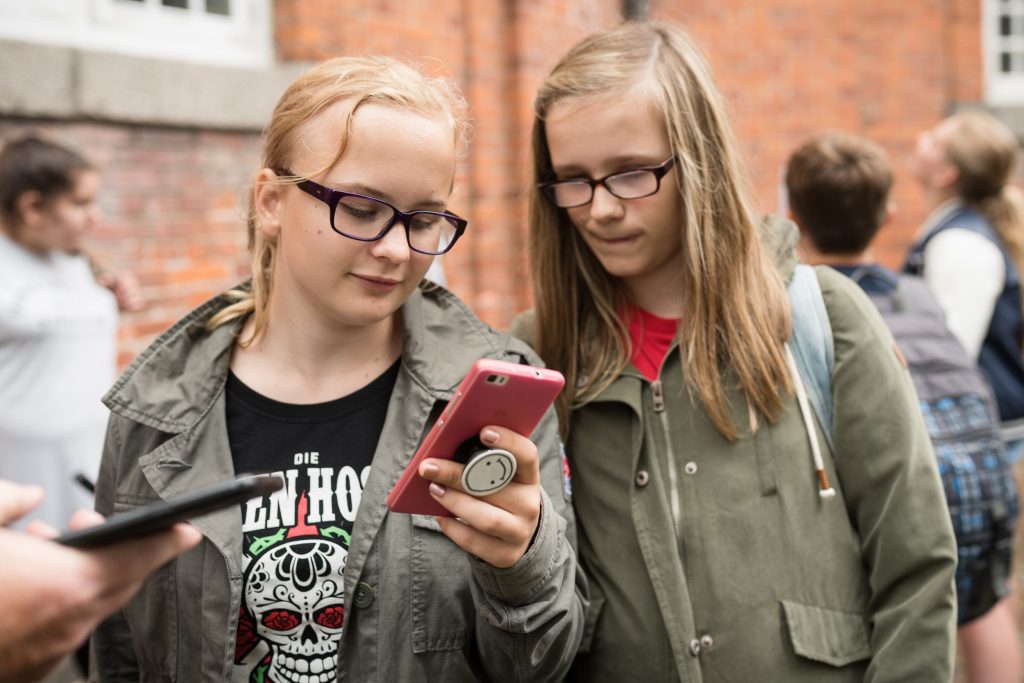Step 1 – Preparation
Before the planned lesson, you should look for suitable tasks or, if necessary, create your own tasks. Think about what content you want to work on or deepen and then search for suitable tasks in the web portal using the filter functions.
Also pay attention to the location of the tasks. It should be easy to reach with the class.
Then create a trail to summarize the tasks. You can also create a digital classroom, share the trail with the learners there and monitor their progress.
If necessary, you should also organize a range of materials beforehand, such as a folding ruler, measuring tape or calculator. When carrying out the trail, learners can also take a piece of paper and pencil with them to write down their calculations.


Step 2 – Preparation in the classroom
The trail is intended to take up and deepen the content of the lesson, so it may be useful to discuss the various mathematical concepts again.
For the implementation, you can either download the trail and its tasks as a pdf and print it out for the learners or use the MathCityMap app.
It is best for learners to work in small groups of around three people.
Only one mobile device per group is needed when working with the app.
Briefly explain how to use the app and discuss how much time the learners have for the trail and where they should meet at the end of the time.
The trail you have created has a code so that you can share it specifically with your learning group. This can be found in the information about your trail. Share it with the learners so that they can download the trail. This means they don’t even need internet access when they are outside.
Step 3 – Go outside and solve tasks
Take your class outside to the place where the tasks have been placed. The learners navigate to the individual tasks using the MCM app or the printed map.
It is best for the individual groups to start at different tasks so that they do not get in each other’s way.
On site, the learners take measurements and work on the questions.
Depending on the teacher’s settings, they can receive direct feedback on the accuracy of their solution in the app.


Step 4 – Follow-up in the classroom
After the outdoor phase, you can discuss the learners’ experiences together in the classroom. You can talk about specific tasks and solutions, as well as different strategies.
It is best to use MathCityMap not only for one outdoor math lesson, but to integrate it regularly into your lessons. Over the course of the school year, learners can always solve new tasks and, if possible, create tasks themselves.


